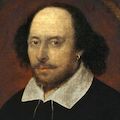Freedom and Technology (Planned book): Difference between revisions
| Line 33: | Line 33: | ||
'''Content''' - “The chapter on Robert Owen might be written in the form of a prologue and three scenes. | '''Content''' - “The chapter on Robert Owen might be written in the form of a prologue and three scenes. | ||
The prologue might contain Robert Owen's original endowment: | The prologue might contain Robert Owen's original endowment:<br /> | ||
1. Infinite compassion (p. 35, 40, 41).<br /> | 1. Infinite compassion (p. 35, 40, 41).<br /> | ||
2. Boundless faith in reason (the visible fact)<br /> | 2. Boundless faith in reason (the visible fact)<br /> | ||
Revision as of 11:26, 4 August 2020
Reconstruction of the book
General thesis
“The thesis of the book is that in our Complex technological civilization there is inherent a basic loss of freedom, not of a legal or political but of an operational nature, which goes to the roots of the metaphysics of everyday life. Here lie the roots of our moral disorientation which leaves us helpless in the face of the portent of science, technology of the reality of society we gain is real. This is the meaning of maturity. (The last paragraphs of the "Great Transformation” spoke of three revelations, but the thought was the same).”
Chapters
Introduction
Why? -
Content - “The introduction would start from technology but would instantly proceed to the idea that adjustment to this involves reshaping human consciousness. The moral part is introduced by our criticism of the market.”[1]
(1.) The discovery of society / The social discontent
Why? -
Content -
2. The young Hegel
Why? - “Chapter Two (…is) still to be written. [It is] about (Chp. 2) the young Hegel.”[2]
3. The young Marx
Why? - “Chapter Three (…is) still to be written. [It is] about (…) the young Marx (Chp. 3)”[3]
4. On post-existentialist thought
Why? - “…there ought to be a Chapter Four: On post-existentialist thought.”[4]
Content - …Research proved lengthy and difficult on account of the tortuous French. However, the paradox of Pasternak might offer a key to that of Sartre - both are noble representatives of a counter-revolutionary era, reactions to a barebones rationalism of the Fascist and Bolshevik holocaust. My wife remarked that Pasternak's gripping lyricism is a direct descendant of Jens Peter Jacobsen, the Danish poet (1885 ), and added: - but so is Sartre of Kierkegaard (1855 ), of course. In this light French existentialism (like Pasternak) provokes a next step. In practical terms this means that my positive thoughts on freedom may be easier to present in the face of Sartre: Pasternak than of Sartre alone.[5]
(5.) Robert Owen
Why? - “The Owen chapter reflects his magic ease of writing. Our analysis of Owen's “second plans” (p. 22) and their interpretation (pp. 24-5) is new: hitherto these plans were ignored since they were as impraticable as the first. Actually they are of the very greatest interest for the understanding of Robert Owen's genius.”[6]
“We might call it “Robert Owen Discovers Society”, but P. said this of Aristotle.”[7]
Content - “The chapter on Robert Owen might be written in the form of a prologue and three scenes.
The prologue might contain Robert Owen's original endowment:
1. Infinite compassion (p. 35, 40, 41).
2. Boundless faith in reason (the visible fact)
3. Dedication unto death (pp. 94, 108, 109, 216).
4. Dread of revolution (anti-violence, gradualism, anti-anti…)
5. Gradualism (against prematureness)
6. Miracles of reason expected (in no time).
7. Tolerance - the fruit of knowledge (of what? society)
8. A weakly boy (never worked in a mill).
Scene 1: Owen stepped into hell – a secluded infant’s slaughter mill in the darkest Scottish congo, (these were not the highlands and there were no roads.) His father-in-law had notice the horde (500) of derelict pauper children and tried to help them. He came face to face with the children and the machines. Owen notices the adults too. They were all criminals. Also he saw the machine (p. 158).
Scene 2: Twenty years of preparation in the wilderness. He was his own John the Baptist (p. 95, 154). There was a shower of miracles – general health, wealth, world fame. They were innumerable reminders to his audiences of this. Owen felt entirely the part of the saviour but was the selfless.
Scene 3: Days of continuous revelation, 1813-1821 with 8 years of rededication. (p. 108, 111, 116, 119, 150). This was a typical climax of rededication, undaunted by the recognition of growing obstacles. (p. 108, 109). (Redeemed – p. 108). 1813 was the opining essay on the New View of Society, and in 1821 the Report to New Lanark. In every one of the steps during the 8 years, he says “it begins today”. The 25 years boom was at an end. All the wealth and fame came from the boom. From the factory came the discovery of unemployment and the whole of “society” emerges from the Villages.
He had three periods, the factory: unemployment, currency, and the business cycle, and Villages of Union, (which were impossible and would break down); and socialism.”[8]
(6.) George Bernard Shaw
Why? - [9]
Conclusion
Why? - “Preceding this chapter the Introduction would supply it on Owen (myself: and perhaps in the conclusion).”[10]
Contract
Text Informations
Reference:
Date: 1957-1958
KPA: 38/13 (contracts, 10 p.)
Other Languages:
| Lge | Name |
|---|---|
| DE | |
| FR |
See also
For the book
In Abraham Rotstein's “Week-end Notes”:
- On a book called Freedom and Technology: IX, (2) XVII, (3) XIX, (4) XX, (5) XXI, (6) XXII, (7) XXIII, (8) XXIV
- Freedom and Technology - General Comments: XI, (2) XII, (3) XIII, (4) XIV, (5) XV
- Introduction to Freedom and Technology: XII
The Speech
References
- ↑ Weekend Notes XXII, 45
- ↑ See. To Thomas A. Bledsoe (3 January 1959), 11.
- ↑ See. To Thomas A. Bledsoe (3 January 1959), 11.
- ↑ See. To Thomas A. Bledsoe (3 January 1959), 11.
- ↑ See. To Thomas A. Bledsoe (3 January 1959), 11.
- ↑ To Thomas A. Bledsoe (3 January 1959), 12.
- ↑ Weekend Notes XV [45/11, 6]
- ↑ “Weekend Notes” XIII, 14,
- ↑ See. “Weekend Notes” XXII
- ↑ See. “Weekend Notes” XV [45/11, 4]

